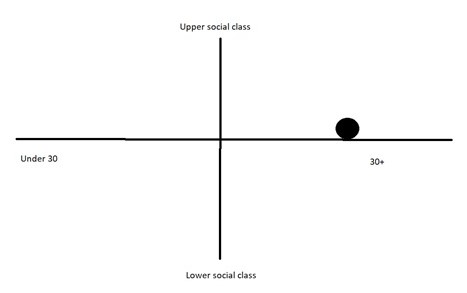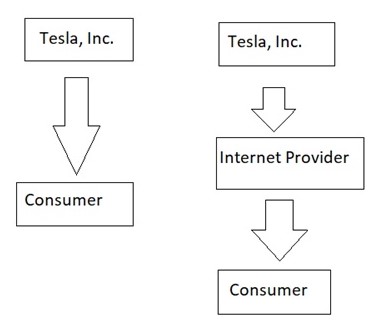Tesla, Inc. is among the most successful businesses nowadays, not least due to the reputation of the electric cars it produces that are considered super-efficient worldwide. However, it is even more challenging to attract potential purchasers, which requires developing a successful business model through strategic planning. In the case of Tesla, the model involves working in several directions at the same time, both in terms of marketing and product design.
SBU in the BCG Matrix
Identifying an SBU
An SBU, which stands for a Strategic Business Unit, is a separate unit of a company, whose activity can be planned independently from the company’s general performance. A division, a product line, or, in some cases, even a particular product or brand can be a separate strategic business unit (iEduNote). Therefore, each model of Tesla electric car, for instance, Model 3, may be regarded as an SBU, as its production is apparently autonomous from that of any other model.
BCG Matrix
The BCG matrix is a widespread business analytical tool designed by the Boston Consulting Group. Notably, it “helps in analyzing the position of a strategic business unit and the potential it has to offer” (Morgan, 2018). The process of analysis involves placing the SBU on a two-dimensional chart, whose Y-axis represents the future market growth, and X-axis – the relative market share of the SBU. The latter is computed as a proportion of the SBU’s market share to that of its closest competitor.
Through the analysis, the SBU can position itself in one of the four quadrants the chart is additionally divided into, specifically, Stars, Cash Cows, Question Marks, or Dogs. Those are the conventional names of four different combinations of future market growth and relative market share, depending on which of the two variables is high or low (iEduNote). In this paradigm, a high-growth and high-share product is classified as a star, which is a metaphor for a profitable business. According to Loveday, the above-mentioned Tesla Model 3 is currently the world’s most popular electric car, which presupposes a stably increasing demand (2020). Eventually, the growth will become slower and downgrade the model to a cash cow, but at the given stage, it is a star.
Growth Strategies the Company Uses for the SBU
The primary growth strategy of Tesla involves intensive market penetration, and Model 3 is apparently not an exception. The most probable objective of such an approach is “to grow the company through aggressive marketing to increase sales revenues” (Grades Fixer, 2019). Product development occupies the second position, notably, Tesla design and implement new products such as solar panels, charging stations, or electric sport vehicles. The novel goods meet the demands of a broader audience; in addition, the company focuses on environmental sustainability, which is highly topical in modern society.
Also, Tesla is known to enter brand new, rising markets and then adjust the products to the new types of customers they find there. A strategy of that kind does not purely enable a sales increase but also illustrates the corporate mission statement: “to accelerate the world’s transition to sustainable energy” (Grades Fixer, 2019). Finally, diversification is also worth mentioning in the list of the growth strategies Tesla use, which lies in designing different products and further expansion.
Ideas to Influence Consumer at All Stages
The buyer decision process has five stages, at each of which the customer may theoretically change their mind. Therefore, it is critical to develop methods of influencing the customer throughout the procedure in order to continue them, not simply attract them in the initial phase. The five stages are actually as follows: need recognition; information and alternatives search; evaluation of alternatives; purchase decision; post-purchase behavior.
The early stage requires the introduction of electric vehicles as such since they apparently remain a brand new category of goods. Here, it is most suitable to demonstrate the customer how possession of a vehicle would increase their mobility and how that of an electric one would make them independent from fuel prices. At the following stages, it is reasonable to offer as many options as possible, which Tesla actually does by means of product development and market penetration. Finally, the cars have to be of sufficient quality to satisfy the customer’s needs and encourage them to cooperate with the company in the future.
Marketing Channels
Tesla, Inc. employs several channels for promoting their products, due to which their approach to communication is referred to as the promotional mix. Thus, the company invests most intensively in viral marketing, although this is “unusual in the automotive industry” (Kissinger, 2018). This channel apparently improves brand awareness, hence strengthens the association of an electric car as such with Tesla. Traditional channels, such as personal selling or public relations, enable a closer connection with consumers.
Positioning Map
The below diagram illustrates the position of Tesla, Inc. according to their target audience with a reference to Dudovskiy (2021). The statistics show that over 80% of all electric car buyers are older than 30 (Statista, 2018). In addition, it has been mentioned above that Tesla focuses on new markets, which requires competitive prices. The two factors allow assuming that Tesla’s main rivals could be plotted in the same quadrant.

Value Offering
The actual product is Tesla Model 3, a mid-size electric vehicle with, optionally, one or two engines. The core product, by definition, “conveys the underlying benefits,” which include powerful batteries and a comfortable interface that simplifies driving significantly (Dymond, 2020). Finally, the augmented, or extended, the product is the umbrella term for the features and attributes. In the given case, those are the relatively low price and several modifications of the model that have different technical characteristics.
Life Cycle Stage
The product life cycle has four stages, notably, introduction, growth, maturity, and decline. The above-mentioned fact that Model 3 has become the world’s most popular electric vehicle places it in the position of growth. Normally, it is followed by a sales rate plateau and that a gradual downward trend. Lyyra and Koskinen, however, argue that “any product can be open-ended and continuously in the making” (2018). The most relevant strategy to enable that involves constant updates and introducing new modifications, which Tesla, Inc. actually does.
Marketing Channel System
Considering the parallel use of several marketing channels that are described above, Tesla’s marketing system is apparently multi-channel. As long as Tesla, Inc. prefers personal selling and other ways of direct communication with consumers, the only intermediary is the internet provider responsible for viral marketing (Kissinger, 2018). Both schemes, with this intermediary and without it, are shown in the map below.

Conclusion
Tesla, Inc. is intensively developing, notably, producing new goods and occupying new markets, due to its multi-dimensional marketing. Specifically, the company uses several marketing channels, both traditional and digital ones, the most essential among which is viral marketing. In addition, Tesla tries to avoid intermediaries in their interaction with customers, which allows for maximal awareness of consumer needs. The variety of models and modifications is another important reason why Tesla electric cars have gained their current popularity.
References
Age distribution of respondents who were likely to purchase an electric vehicle in Southeast Asia as of January 2018. Statista. Web.
BCG matrix: Definition, chart, explanation with examples. (n.d.). iEduNote. Web.
Dudovskiy, J. (2021). Tesla segmentation, targeting and positioning: Overview. Business Research Methodology. Web.
Dymond, R. (2020). Did you know that every product has 3 dimensions? Dymond Digital. Web.
Four growth strategies used by Tesla Motors. (2019). Grade Fixer. Web.
Kissinger, D. (2018). Tesla, Inc.’s marketing mix (4Ps) analysis. Panmore Institute. Web.
Loveday, S. (2020). Tesla Model 3 is the world’s most popular electric car by far. InsideEVs. Web.
Lyyra, A., & Koskinen, K. (2018). How Tesla is changing product life cycle in the car industry. LSE. Web.
Morgan, S. (2018). BCG matrix and VRIO framework for Tesla Motors. Case48. Web.